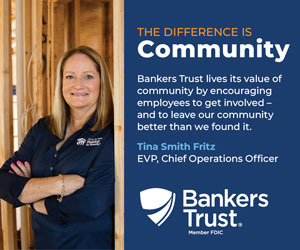South Side group hires help to spur development

Major arterial streets on Des Moines’ South Side could look significantly different in the near future – and the South Side Revitalization Partnership knows it’s going to take more than flower planters to get them to where they want them to be.
The SSRP, a group composed of business owners and residents, has ramped up its efforts to bring economic growth to the South Side in recent months, and on Wednesday, the group voted to work with RDG Planning and Design to map out a plan for land use and economic development for Southeast 14th Street and Army Post Road. The SSRP’s members say making improvements to the seven miles of roadways is important to restoring vitality to the area.
“We worked with Elly Walkowiak from the city (economic development office). She helped us see that instead of doing just do a beautification project, like Fleur Drive, we really had to look beyond making the area look pretty to how we were going to market this corridor so that commercial developers will see the value in property and be willing to invest in it,” said Mel Pins, a representative from the Somerset Neighborhood Association and a member of the SSRP.
RDG, which has developed revitalization plans for numerous corridors and urban districts, including Sixth, Grand and Ingersoll avenues in Des Moines, intends to hold a series of information-gathering sessions, or “charrettes,” to get input from South Side stakeholders, businesses and other interested parties on how to improve the two thoroughfares. Following more workshops, which will focus on specific segments of the roads, RDG will present its concepts to the SSRP and the city. The whole process, which begins this month, is estimated to take about a year, according to the company’s proposal.
“The best thing we ever did was to get this study going,” said Tom Akers, one of the founding members of the SSRP. “Hiring the consultant will give us the tools we need to get grants and state funds, and we’ll have an easier time getting groups and businesses committed to helping us when they see what we’re planning to do.”
When the SSRP was formed about five years ago, one of its main areas of interest, according to Akers, was how to make the South Side’s commercial land attractive to developers, who could build in undeveloped land nearby and receive tax incentives.
“I owned some land, and I couldn’t sell it because businesses could get tax incentives by building in cornfields,” Akers said. “This one guy from a food brokerage said to me, ‘Why would I want to build here when I can build out here at the Airport Commerce Park and get tax abatement?’ I understand that it’s all for the sake of economic development, but I also wanted to see some of those incentives back into the city so that the older inner city does not die.”
One of the SSRP’s first orders of business was to make tax abatements possible on Southeast 14th Street and Army Post Road, while at the same time, setting new building standards that would improve the aesthetics along the streets and encourage quality construction projects.
“We wanted to level the playing field – or make the playing field bigger here – to make it worth the developers’ time,” Akers said.
The group worked with the city of Des Moines to get three-year tax abatements approved in 2001, on the condition that the projects would be constructed mostly from high-quality building materials such as brick and stone. Since then, the SSRP has helped design plans for a future South Side bike trail, collected donations and secured city funds for a new welcome sign to be built this spring at the intersection of U.S. Highway 65/69 and Bloomfield Road. But Akers said the group’s most significant project is what it’s working on now with RDG.
Walkowiak, the city economic development coordinator, worked with the SSRP on putting their requests for proposals together and interviewing the consultants. She agrees that this process could be a major step forward for revitalization and economic growth in this part of the city.
“Until now, no one has taken the initiative to take a more detailed look at the South Side, and I’m very proud of what they’ve (SSRP) done so far,” Walkowiak said. “We all hope that they get a lot of really great ideas from the people who live and work in the area and are able to take those visions to come up with a plan that they believe is realistic and achievable.”
The city of Des Moines pledged $25,000 for the SSRP to go forth with the study, the Wal-Mart Foundation contributed $5,000, and the group is funding the remainder of the estimated $55,000 project through donations. RDG had estimated the project cost to be $98,000, but the company told the group it was willing to work uncompensated for part of the process to complete the work that “they know needs to be done,” according to Jo Corigliano, the chairwoman of the SSRP.
“You can’t beat this deal,” Corigliano said. “Out of the three companies that we interviewed, RDG had the clearest presentation for how to get the project done within our budget. We are thankful that they are willing to take on part of the cost because they believe in the project, too.”
In addition to RDG’s willingness to work within the group’s budget, members of the SSRP like the wealth of experience that the company’s project team will bring to the project.
“Some of the principals in our top firm, RDG, are Gary Lazano and Jim Grant, two former city planners, and a gentleman out of Omaha who has done a lot of work with market analysis,” Pins said. “Frankly, with having Gary and Jim, who had worked for the city for years, they understand some of the challenges the corridors face. They also see where there are opportunities for the corridor because of their knowledge.”
The South Side already encompasses 60 square acres of land by some estimates, and as more growth occurs, the South Des Moines Chamber of Commerce wrestles with how to bring business owners together. Craig Krouch, a longtime member and the president of the chamber, said a member of the board of directors estimated once that there are around 1,500 small businesses on the South Side. The chamber has fewer than 200 members.
“There is a wealth of opportunity for membership, for sure, but we are pleased that we are getting more participation from our business owners who are members,” Krouch said.
The chamber has been more active in the past year since it changed its monthly meetings from evening to luncheon gatherings at the Wakonda Club, and the group has focused a lot of attention on creating more networking for its members, Krouch said.
“Our meeting attendance has doubled since we started having luncheon meetings, and we’ve really spent a lot more time and attention to renewing our members and going after new members,” he said. “We’re doing more networking events and promoting our membership to make sure that we’re helping our members are getting the most bang for their buck.”
Krouch said he is encouraged by new projects in the Southridge Mall area, steady growth at the business parks near the airport, a housing boom on the southeast side of the city and other new businesses interspersed across the area.
“There are lots of great things happening, and we have new businesses opening on the South Side all the time, such as the new restaurant, Dicky Dougan’s (Roadhouse Grill), in the old Chi-Chi’s, a new gift shop on Southeast Ninth, a new Amoco station and others,” he said.
Walkowiak said she has also seen forward momentum on the South Side, even though the new development projects sometimes go unnoticed.
“There has been growth, and it’s important to recognize that the investment is happening, sometimes with retrofits and renovations, and with developments here and there that are interspersed with existing properties.”
What’s hard to miss, Walkowiak and Krouch said, is the housing boom and related population growth going on in the southeast part of the city, particularly in the Easter Lake and Three Lakes areas. Krouch estimates that another 10,000 families will build homes in those areas in the next decade, which will have a positive effect on commercial development.
“We say that retail follows rooftops, and there’s a number of new plats of land to be developed for housing over the next year or two,” Walkowiak said.
“With the housing growth, we’ve also noticed the growth of one of the greatest venues in Iowa, the Blank Park Zoo,” Krouch said. “If we can figure out a way to get the revitalization efforts all coordinated with the zoo, Southridge Mall, Fort Des Moines and the A.H. Blank Golf Course, it will be huge for attractions and economic development here on the South Side.”
SOUTH SIDE PRIDE
The South Side Revitalization Partnership, a group of business owners and concerned citizens, was formed in 2000 as an affiliate to the South Des Moines Chamber of Commerce. The group focuses its attention on the Army Post Road and Southeast 14th Street corridors, according to Jo Corigliano, its chairwoman.
About 15 to 20 people are active in the SSRP, which operates through donations. Although the group is somewhat small in membership, those involved are not afraid to tackle big projects, Corigliano said. On Wednesday evening, the SSRP held a forum with city leaders to discuss bringing a driver’s license station to Southridge Mall, and the group has collected 800 signatures in favor of the idea. Anyone interested in getting involved in the SSRP can call Corigliano at 243-7738.







